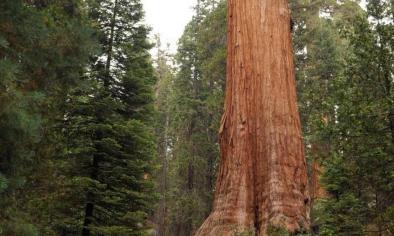Science Source
Emerging stress and relative resiliency of Giant Sequoia groves experiencing multi-year dry periods in a warming climate
- Investigates the relative greenness and wetness of Giant Sequoia (Sequoiadendron giganteum, SEGI) groves and the surrounding Sierra Nevada, California forests using patterns in vegetation indices from Landsat imagery for the period 1985-2015
- Finds that vegetation greenness (normalized difference vegetation index) and thus forest biomass in groves increased by about 6% over that 30-year period, suggesting a 10% increase in evapotranspiration
- Observes no significant change in the surrounding non-grove forest
- Finds that in this period, local temperature measurements showed an increase of about 2.2 °C
- The long-term trends of grove greenness and wetness were elevation dependent, with the lower rain-snow transition elevation zone (1700 – 2100 m) marking a change from an increasing trend at lower elevations to a decreasing trend at higher elevations
- Results show that the 2011-2015 drought brought an unprecedented drop in grove wetness, over five times the 1985-2010 standard deviation; and wetness in SEGI groves dropped 50% more than in non-grove areas
Related Content
Science Source
| Earth Interactions
Exploring the Origins of Snow Drought in the Northern Sierra Nevada, California
Benjamin J. Hatchett and Daniel J. McEvoy
Headline

Nov 21, 2017 | The Modesto Bee
How have drought, climate change impacted beloved giant sequoias? New study finds out
Science Source
| Pacific Institute
Impacts of California’s Five-Year (2012-2016) Drought on Hydroelectricity Generation
Peter Gleick
Science Source
| American Meteorological Society
Multi-century evaluation of recovery from strong precipitation deficits in California
Eugene. R. Wahl, Henry F. Diaz, Russell S. Vose et al


